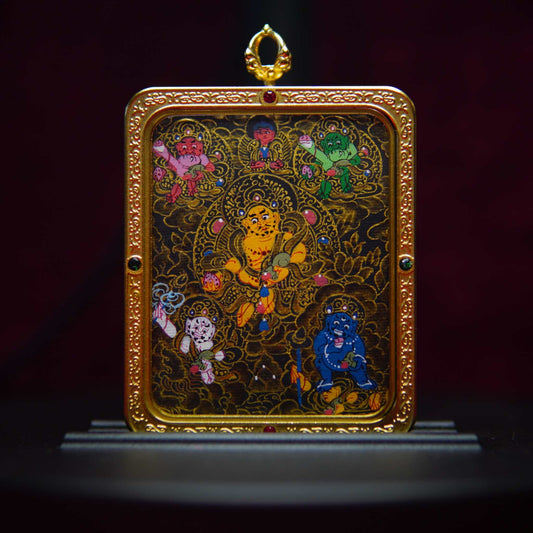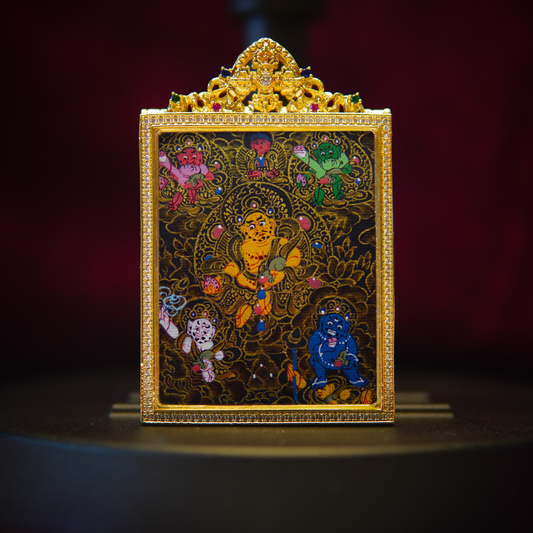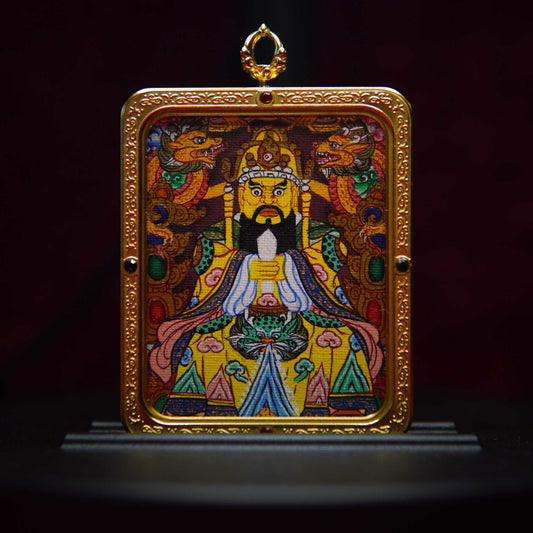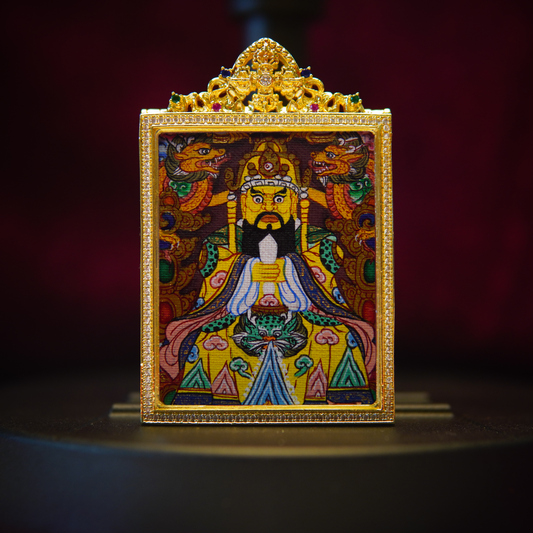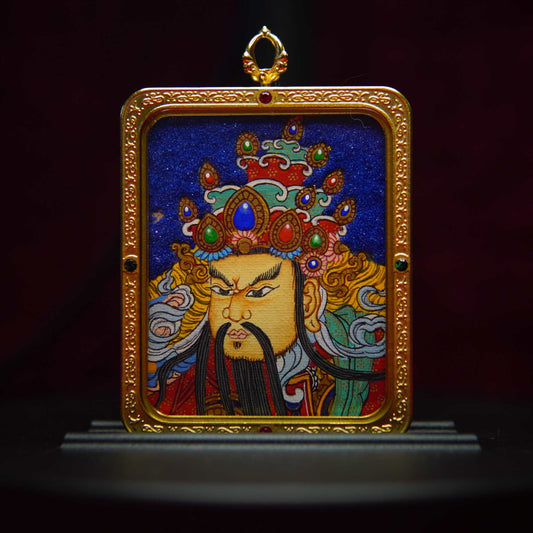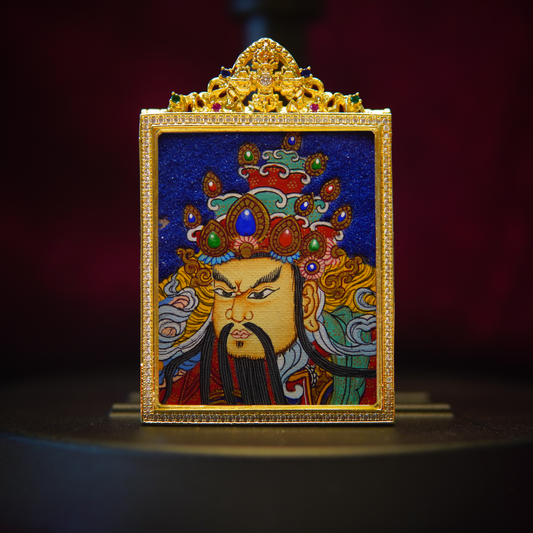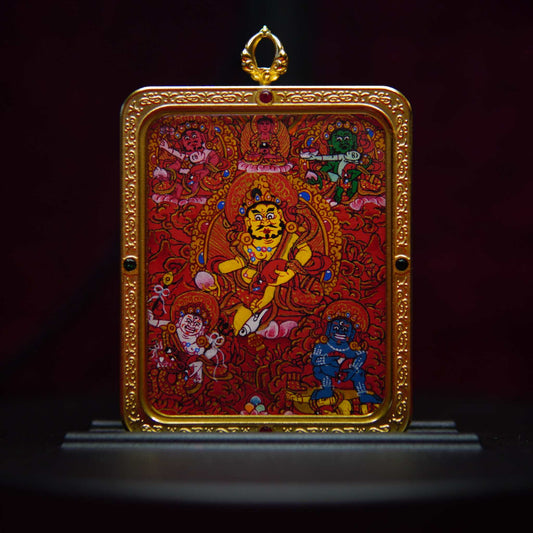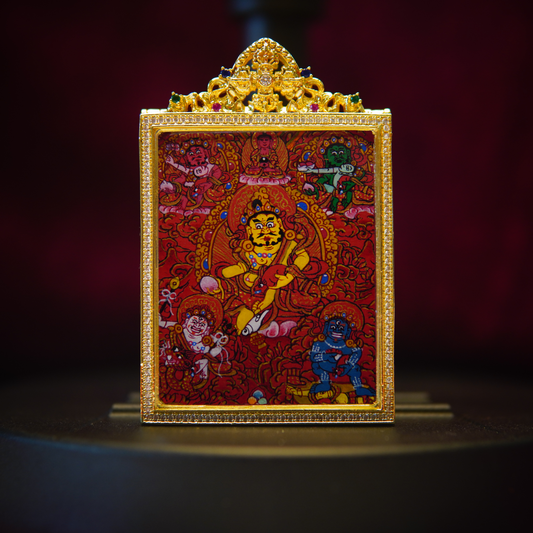Is Thangka a Good Investment? What Modern Collectors Should Know
Tapita- Is Thangka a Good Investment? What Modern Collectors Should Know
- 🌸 What Is a Thangka?
- 📈 Why Thangka Art Is Gaining Value
- 1. Cultural Preservation = Scarcity
- 2. Global Interest in Eastern Spirituality
- 3. Long-Term Appreciation
- 🧧 Thangka as a Spiritual Investment
- ⚠️ What to Consider Before Buying a Thangka
- 🧘♂️ What About Thangka Jewelry?
- 🙏 Final Thoughts
Tibetan Thangka paintings—once reserved for monasteries and meditation halls—are now drawing interest from collectors, spiritual seekers, and cultural investors around the world. But beyond their beauty and spiritual symbolism, a rising question emerges:
“Is Thangka art a good investment?”
The short answer: Yes, but with conditions. Let's explore why.
🌸 What Is a Thangka?
A Thangka (also spelled Tangka or Thanka) is a traditional Tibetan scroll painting, typically depicting Buddhas, bodhisattvas, mandalas, or scenes from Buddhist cosmology.
Each Thangka is hand-painted using natural mineral pigments, often on cotton or silk. It’s not just art—it’s a sacred object used for meditation, visualization, and spiritual protection.
Unlike mass-produced wall prints, authentic Thangkas are detailed, time-intensive, and spiritually consecrated.
📈 Why Thangka Art Is Gaining Value
1. Cultural Preservation = Scarcity
Many skilled Thangka artists are aging, and fewer young Tibetans are taking up this sacred craft. As a result, authentic Thangkas are becoming increasingly rare, especially those created using traditional methods and materials.
Collectors are realizing: this isn’t just art—it’s endangered heritage.
2. Global Interest in Eastern Spirituality

From Silicon Valley to Manhattan, Americans are turning to Buddhism, meditation, and energy-based practices for peace and clarity. Thangkas appeal not only as décor, but as spiritual tools—and serious practitioners are willing to pay for genuine, hand-crafted pieces.
3. Long-Term Appreciation
While Thangkas may not appreciate as rapidly as modern art or NFTs, their value steadily increases when well-preserved—especially older pieces, or those depicting rare deities or mandalas.
🧧 Thangka as a Spiritual Investment
Investing in Thangka isn’t just financial—it’s spiritual.
-
A Thangka featuring Green Tara, Vajrakilaya, or Padmasambhava is believed to offer blessings, protection, and energy purification.
-
When consecrated by lamas or monks, a Thangka becomes a living presence, offering energetic support to a space.
Owning one is an investment in your personal spiritual environment, much like buying a crystal, altar, or sacred text—but with the aesthetic prestige of fine art.
⚠️ What to Consider Before Buying a Thangka
If you're considering buying a Thangka as an investment, keep in mind:
✅ Authenticity matters – Avoid mass-produced or machine-printed pieces. Look for hand-painted, mineral pigment, and artist-signed works.
✅ Age isn’t everything – A well-executed modern Thangka from a known artist may be more valuable than an old but generic one.
✅ Spirituality adds value – Pieces that have been blessed, filled with mantras, or used in ceremony carry higher energy and collector interest.
✅ Documentation helps – Provenance, photos of the artist or blessing, and origin certificates can support future resale.
🧘♂️ What About Thangka Jewelry?
For modern collectors or spiritual seekers on the move, wearable Thangka art—like hand-painted pendants—offers a portable, affordable way to invest in this tradition.
At Zendo Thangka, we create miniature Thangka pendants:
Hand-painted with sacred imagery (e.g. Medicine Buddha, Green Tara)
Encased in gold or silver
Infused with mantra scrolls or blessings
They're not just meaningful gifts—they’re daily-wear spiritual investments.
🙏 Final Thoughts
Thangka art is more than a decorative piece—it's a spiritual ally, a cultural artifact, and yes, for the right buyer, a long-term investment.
Whether you're a collector, a practitioner, or someone drawn to Eastern wisdom, owning a Thangka is a way to support ancient tradition, enrich your spiritual life, and hold a timeless symbol of awakening—in your home or around your neck.

